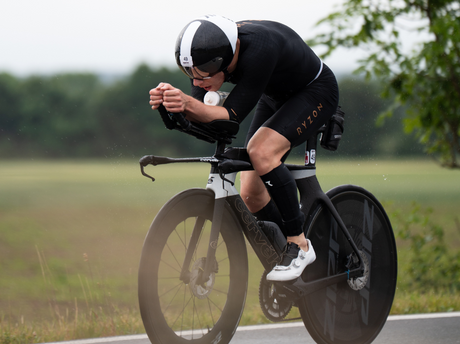Our experience in coaching and current studies have shown that approx. 60g of carbohydrates per hour in a race is a good guideline to be adequately supplied with energy and at the same time not to have problems with the digestive system. With an optimized composition of carbohydrates in glucose and fructose (2:1), this value can also be increased in the direction of 80 g, sometimes even up to 120 g of carbohydrates for Ironman athletes.
But in order to achieve such values in competition under stress, the intake of carbohydrates must be trained. On the one hand to prepare the body for the mass and on the other hand to test whether the digestive system can cope with the amount at all. Nothing would be more annoying than losing valuable time or even the whole race on the dixiklo at the edge of the track.

I recommend preparing in six phases. The first two phases can also be completed in parallel.
Phase 1: This is generally about training with a carbohydrate-rich basic diet. So it's not about eating enough carbohydrates during training, but about training with a daily intake of up to 6g per kg of body weight up to three days a week. This procedure is primarily intended to simulate and train the body's reaction to training under "full" conditions.
Phase 2: The second phase can take place parallel to the first phase. While the basic diet is very high in carbohydrates, you should primarily consume fructose during training. So rely primarily on fructose to optimize the maximum possible intake of carbohydrates. This should be at least 45gr per hour. This can also happen up to three days a week.
From the third phase, the main focus is on recording during training.
Phase 3: From here you should start with the qualitative intake of carbohydrates during the training sessions. These can still be simple products such as gummy bears, potatoes or bars. The recommended amount here is 45-60gr per hour.
Phase 4: The fourth phase is about increasing this amount further. If the tests in the third phase were successful, you can try to increase the amount to up to 90g per hour in this phase. In this phase, however, I would advise laying out the selected training routes in such a way that it is easy to break off or there is a quiet place on the way for a possible stopover should the stomach not tolerate the amount.
Phase 5: If you have increased the amount of carbohydrates well and are safely in the range of 60-90 grams of carbohydrates, you can start to optimize the amount consumed. Maybe even more than 100gr? However, it is said here that such quantities are primarily about cycling, for example over a long distance. The stomach doesn't move here and you don't have to run into any downhill.
Phase 6: The last phase is then about adapting the nutrition strategy to the planned race. It is particularly important to note how you can consume your planned amount of carbohydrates with the refreshment stations provided by the organizer. Above all, you should ask yourself the following questions: Is there enough food? What is offered in the catering? What products are there?
Depending on what the organizer offers, you should then equip yourself in such a way that you can get through the race with the maximum possible planned amount of carbohydrates.
Tips for optimal carbohydrate supply:
- Using a carbohydrate drink. As a result, a higher amount of carbohydrates can be absorbed than with energy gels and at the same time weight can be saved due to the unmixed powder. -> Sports hunger tip: Tailwind or Maurten Drink Mix
- Use energy-rich gels with 40-50g of carbohydrates per unit. This also saves weight again and you don't have to take a gel every 25-30 minutes.
- Fill the empty soft flasks in your backpack with the carbohydrate powder. This avoids handling the packaging at the refreshment station.
- In longer races for tolerance, also rely on natural foods such as potatoes.
Author: Lars Schweizer - Coach at Twopeaksendurance









